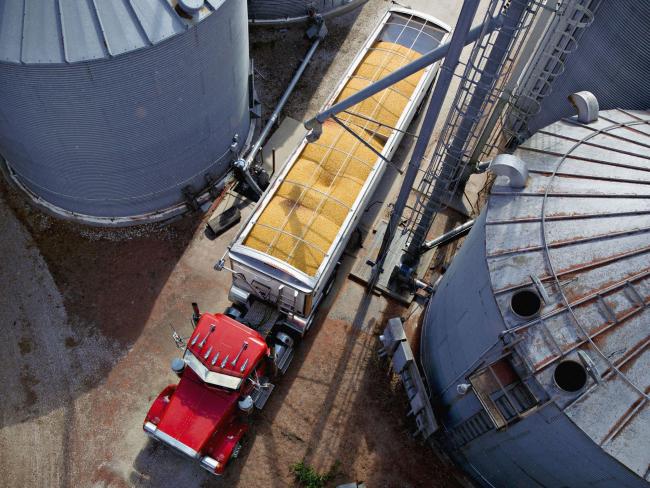(Bloomberg) -- Terms of Trade is a daily newsletter that untangles a world threatened by trade wars. Sign up here.
It’s either going to be a boom fourth quarter for U.S. farmers, or that extra $12.5 billion in American agriculture purchases promised by China for this year isn’t happening.
That’s what the U.S. Department of Agriculture estimates on export numbers released on Thursday indicate.
The agency is predicting a $3.9 billion bump for exports to China in the year ended Sept. 30, leaving a whopping amount of corn, pork, soy and other purchases to be made in the last three months of the year to reach the trade accord goal.
China pledged to buy an additional $12.5 billion in U.S. agricultural goods this year on top of 2017 levels, which were already much larger than last year. The USDA forecasts, while lower than the market expects, likely mean it will be difficult for China to reach its commitments, said Dan Basse, president of consulting firm AgResource.
“There’s still a lot of uncertainty out there in terms of ‘will the Chinese comply?’” Basse said in an interview Thursday at the USDA’s annual outlook forum, where the agency released the estimates.
If the increase is only about $4 billion by September, it’s likely the U.S. “may have to act in terms of putting additional tariffs back on the Chinese and reinvigorating the trade war,” Basse said.
To be fair, there’s some fine print here. First, U.S. Agriculture Secretary Sonny Perdue said at the forum that purchases are likely to be higher than those estimates, which were laid out by USDA Chief Economist Robert Johansson.
Second, the USDA figures don’t include shipments of commodities including ethanol, seafood and pet food, which are part of the trade deal. And lastly, the fourth quarter is typically when Chinese purchases pick up anyway due to the timing of grain and oilseeds harvests. Soybeans have historically made up a large bulk of Chinese purchases.
It also should be noted that firm commitments for individual commodities weren’t publicly announced as part of the trade deal, so it’s yet to be seen how exactly the buying will come to fruition.
USDA Forecasts for 2020 Agricultural Exports (Table)
“It’s certainly feasible to get to the phase-one commitments in a number of different pathways,” Johansson said.
Still, he also added that whether China meets the pledge will “depend on a number of things,” including market conditions and the impact of the deadly coronavirus outbreak on the Asian nation’s economy and food demand.
For his part, Secretary Perdue said he expects China to “live up” to the deal, and purchases will start ramping up in the northern hemisphere Spring once disruptions from the coronavirus subside. And if China doesn’t follow through, the U.S. could retaliate with more tariffs, he said.
